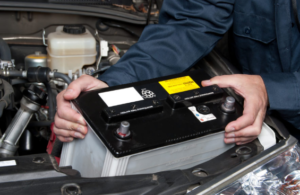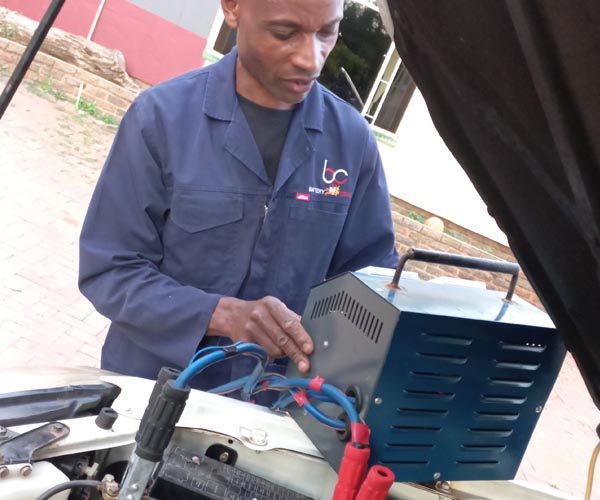Your car battery is the unsung hero of your vehicle, ensuring you can start your car and power its electronics. However, neglecting your battery’s maintenance can lead to unexpected breakdowns and costly replacements. Proper care techniques can significantly extend your car battery’s lifespan. In this guide, we’ll share expert tips on maintaining a healthy battery and recognizing signs of potential issues.
Why Car Battery Maintenance is Essential
A car battery typically lasts 3 to 5 years, but this lifespan can be cut short without proper care. Extreme temperatures, frequent short trips, and lack of maintenance are common factors that degrade battery health. Regular maintenance ensures your car is always ready to go, reduces the risk of being stranded, and saves you money in the long run.

Top Tips to Extend Your Car Battery’s Life
1. Clean Battery Terminals Regularly
Over time, corrosion builds up on the battery terminals, disrupting the electrical connection and reducing efficiency. To clean your battery terminals:
- Mix baking soda with water to create a cleaning solution.
- Use a wire brush or an old toothbrush to scrub off the corrosion.
- Rinse with water and dry thoroughly.
- Apply petroleum jelly to the terminals to prevent future corrosion.
2. Secure the Battery Properly
Loose batteries can vibrate while driving, causing damage to internal components. Ensure the battery is tightly fastened in its housing to prevent movement and reduce wear.
3. Avoid Frequent Short Trips
Short trips prevent the alternator from fully charging the battery. If possible, take your car for longer drives occasionally to keep the battery charged and prevent sulfation, which can occur when the battery doesn’t reach a full charge.
4. Monitor Battery Voltage
Regularly checking your battery’s voltage is an easy way to assess its health. Using a multimeter:
- A fully charged battery should read between 12.6 and 12.8 volts when the car is off.
- If it reads below 12.4 volts, the battery is partially discharged.
- With the engine running, the voltage should be between 13.7 and 14.7 volts, indicating the alternator is charging properly.
5. Minimize Power Drain When the Engine is Off
Leaving lights, electronics, or the radio on while the engine is off can quickly drain your battery. Make it a habit to double-check that everything is turned off before leaving your car.
6. Use a Battery Maintainer for Long-Term Storage
If your car isn’t being used for extended periods, invest in a battery maintainer. This device keeps the battery charged at an optimal level, preventing it from discharging completely.
7. Test Your Battery Under Load
A load test simulates real-world conditions, such as starting the engine, to check how the battery performs under stress. You can perform a load test with a load tester or visit a professional mechanic for a more thorough assessment.
Signs Your Battery May Need Replacement
Even with regular care, all batteries eventually wear out. Look for these warning signs:
- Slow engine starts: If your car struggles to start, the battery may be losing charge.
- Dim headlights and electronics: Weak power output can result in dim lights or malfunctioning electronics.
- Dashboard warning light: A lit battery warning light often indicates charging system issues.
- Battery age: If your battery is over 3 years old, have it tested regularly and be prepared for a replacement.
Environmental Factors That Affect Battery Life
- Extreme temperatures: High heat can evaporate battery fluid, while cold temperatures reduce its ability to hold a charge.
- Humidity and moisture: These can accelerate terminal corrosion, weakening electrical connections.
- Driving habits: Frequent idling or short trips shorten the battery’s lifespan by not allowing a full charge.
Conclusion
Your car battery is a crucial component that deserves regular attention. You can extend your battery’s life and prevent unexpected failures by following these maintenance tips—such as cleaning terminals, avoiding short trips, and monitoring voltage. If you want a perfect solution for your car battery visit the Batterycrew site.
For a deeper dive into how to test your battery’s health, read this detailed guide here. Don’t wait for a breakdown—stay proactive, and enjoy a reliable, stress-free driving experience!
Read More blog









1 Comment
equilibrando
Equipos de equilibrado: esencial para el funcionamiento estable y efectivo de las máquinas.
En el campo de la avances actual, donde la eficiencia y la estabilidad del dispositivo son de alta trascendencia, los sistemas de balanceo juegan un función esencial. Estos aparatos específicos están diseñados para calibrar y fijar elementos móviles, ya sea en maquinaria de fábrica, vehículos de transporte o incluso en aparatos hogareños.
Para los profesionales en soporte de sistemas y los ingenieros, utilizar con sistemas de calibración es fundamental para promover el operación estable y fiable de cualquier sistema móvil. Gracias a estas herramientas tecnológicas modernas, es posible reducir significativamente las sacudidas, el estruendo y la tensión sobre los cojinetes, extendiendo la vida útil de piezas caros.
Igualmente importante es el rol que tienen los equipos de equilibrado en la servicio al comprador. El apoyo profesional y el soporte permanente empleando estos sistemas facilitan brindar prestaciones de excelente calidad, mejorando la agrado de los compradores.
Para los titulares de proyectos, la aporte en equipos de ajuste y detectores puede ser fundamental para optimizar la efectividad y productividad de sus equipos. Esto es sobre todo trascendental para los dueños de negocios que dirigen pequeñas y medianas emprendimientos, donde cada elemento cuenta.
Asimismo, los dispositivos de equilibrado tienen una vasta uso en el área de la prevención y el control de nivel. Habilitan detectar probables fallos, reduciendo mantenimientos caras y problemas a los aparatos. También, los resultados recopilados de estos sistemas pueden emplearse para maximizar procedimientos y incrementar la reconocimiento en sistemas de búsqueda.
Las áreas de aplicación de los dispositivos de balanceo comprenden diversas ramas, desde la elaboración de ciclos hasta el monitoreo del medio ambiente. No interesa si se trata de extensas manufacturas productivas o limitados talleres de uso personal, los aparatos de equilibrado son indispensables para asegurar un desempeño productivo y sin riesgo de interrupciones.